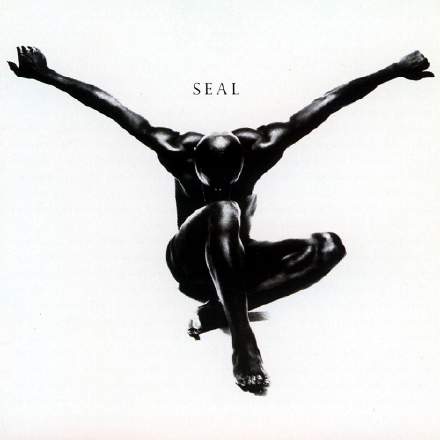
I have no idea whether there was any truth in it, but the rumour I heard circulating amongst studio rats of the mid-90s was that Trevor Horn’s record company (ZTT) was known for signing artists up for ‘cross-recoupable’ contracts which stipulated that all recording costs were to be reimbursed both from the release’s mechanical royalties (via ZTT) and from its songwriting royalties (via Horn’s own Perfect Songs publishing company) before the artist received a penny. Now, given that many of Horn’s productions were carried out at his own high-end Sarm studio facilities, I’ve often found myself wondering how much of his penchant for opulently costly productions such as ‘Kiss From A Rose’ might have derived from knowing that no-one at ZTT or Perfect Songs had any incentive to query the price tag – quite the opposite, in fact, as the more Sarm inflated the recording costs under such circumstances, the more of the artist’s eventual royalties would be siphoned back to Horn via his recording and publishing companies. To play Angel’s Advocate, though, wouldn’t it then also have been in Horn’s interests to add another hour or two onto the clock to sort out the vocal plosive thumps most clearly audible on “been” at 2:56, “bloom” at 4:27, and “hits the” at 4:30?
All such surmise aside, though, there’s another aspect of Horn himself that feels salient to this production: as a musician he was first and foremost a bass player. And if you listen to the balance here, it does feel as if the bass guitar is lionising the low end and warmth frequencies of the mix. Compare it to the acoustic guitars and piano, for instance, which feel very thin by comparison. I’m not saying this is a bad call, though, as a full-sounding bass-line can help make a song’s harmonic framework clearer, and also serve as a conduit for additional melodic interest, such as the descending scale under “drug that’s the high and not the pill” (0:40) or the athletically arching line under “kiss from a rose on the grey” (0:58). And there’s no denying the musicality of the bass-playing either, which is full of lovely little fills, plenty of nice slides (such as the one leading into the third verse at 3:01), and beautifully placed note-endings (my favourite being the accented stop on the second syllable of “baby” at 1:41, which beautifully propels us through one of the song’s signature arrangement-breakdown moments).
On the level of song-writing, this release is unorthodox in many respects, not least on account of it’s 3/8 time-signature. Structurally, what’s most notable to me is the contrast between the unusual phrase/section lengths of its verses/prechoruses and the more regular eight-bar and 16-bar sections of the introduction, reintroduction (1:17), middle section (2:24-3:02) and choruses. Here’s a fun experiment: try mentally dividing just the first verse (0:24-0:44) into smaller sub-sections. My initial impression was that it had three sub-sections of five bars (ie. 5+5+5), for instance. But then I had to concede that bars 7 and 12 of the backing feel more like the start of new sub-sections than bars 6 and 11 do, which kind of undermines that interpretation with a suggestion of 6+5+4. And what about the fact that the four-bar sub-sections of the chorus (which uses an almost identical chord pattern) always start with a return to the G chord? Does that make the verse, with hindsight, feel more like 4+5+6? The answer, of course, is that there isn’t any obvious answer – and that’s the whole point! To my mind, this very structural ambiguity of the verse/prechorus is an effective songwriting device because it helps make the following choruses sound more settled and satisfying. But there’s more, because the second verse (1:28-1:51) adds a couple of extra bars compared with the first, while the third verse (3:02-3:24) then removes a bar compared with second. It’s all beautifully calculated to recapture your attention for each new verse, and to keep you guessing just enough each time round that the chorus’s structural stability still delivers a fresh pay-off.
Incidentally, this song was featured in an episode of the excellent Song Exploder podcast. Not only does this give you a chance to hear some of the mix elements soloed (including those plosive vocals, which show signs of extensive comping too, as you’d expect), but there’s also a moment when Seal and Horn mention that part of the reason for the unusual verse structure is that they added an extra bar at 0:29 to allow Seal to take a breath between “alone on the sea” and “you remain”. (I’m kind of assuming that means they also added one at 0:36 between “dark side of me” and “love remains” too, but who knows.) Much as with Bonnie Raitt’s recent Grammy winner 'Just Like That', I think budding songwriters can learn a lot from this song about the advantages of adapting their productions to the inherent qualities of the vocal line, rather than just stretching the vocal line to fit a more metrically regular backing track.
One other little trivia nugget here: this song appears to be about 40 cents above concert pitch. My first thought was that perhaps the production had been sped up to reduce the overall track length, but a few experiments in my DAW showed that this would only have brought it down from 4:54 to 4:47, which doesn’t seem like a big deal. Listening to the track slowed down back to concert pitch, though, the shift from 132bpm to 130bpm does seem to make a surprisingly big difference to the rhythmic feel of the song. Have a listen. Release Pitch: play_arrow | get_app Concert Pitch: play_arrow | get_app It definitely seems to ‘plod’ a bit at the slower tempo for me, so I reckon it was a good call to speed it up.










